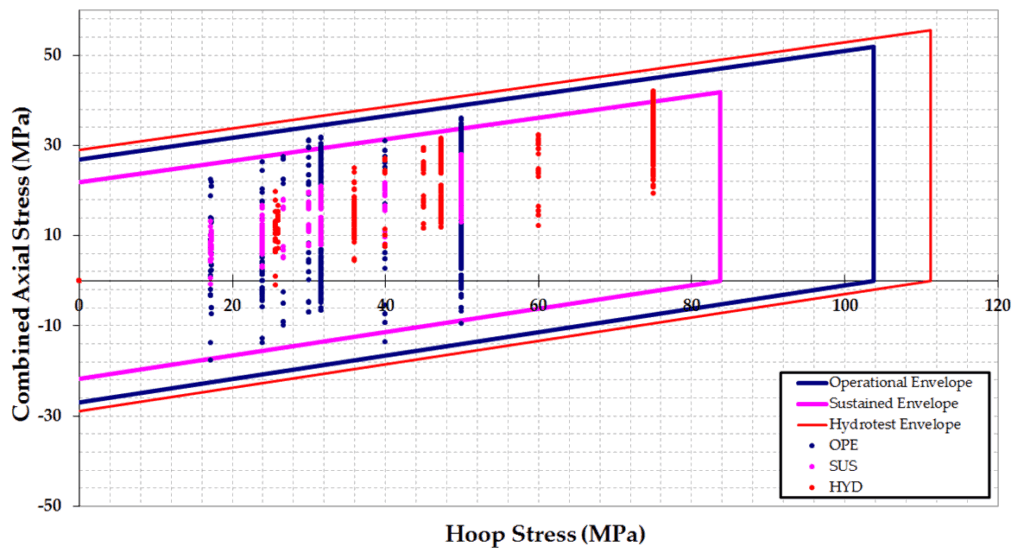This case study describes the stress analysis performed on a firewater piping system located in the Middle East. The system was constructed using Glassfier Reinforced Epoxy (GRE) pipes. Most of the piping was buried underground and included several connections to above-ground steel piping, fire hydrants, and similar equipment.
Analysis
The static stress model of the large firewater system was divided into two parts: the north half of the plant and the south half. The system routing and pipe properties used for the analysis were based on information provided by the pipe supplier.
Piping stress analysis software CAESAR II was utilized to create the model and compute piping deformations, loads, and stresses. The stresses computed at each node in the model were extracted from the software package to be analyzed by an in-house software program from Dynaflow Research Group. This was done to compare the computed stresses against the allowable stresses to comply with ISO 14692, the standard for GRE pipe design.

Results
From the static stress assessment, it was found that several modifications were necessary to improve the original proposed piping design and keep the stresses below the allowable values according to the ISO 14692 code. These modifications included:
- Modification of the buried thrust block design at several locations of the hydrant branches.
- Improvement of the GRE to steel flange connection at the fire hydrants to reduce the bending moments on several critical GRE to steel flange connections.
- Reinforcement of several locations with additional laminate on top of the nominal structural wall thickness.
- Use of flexible wrapping at several buried locations to reduce the loads of the soil on the critical buried pipe sections.
Based on the performed static stress analysis, several recommendations were communicated with the client. Firstly, provided that the system was built according to the proposed recommendations, the flange loads were found to be within acceptable levels for sustained, operational, and hydrotest conditions. Secondly, the firewater system was deemed capable of withstanding the specified design loads, including soil loads, thermal loads, and water hammer loads, without exceeding the allowable stress limits.
Key Takeaways
- GRE firewater piping systems require thorough stress analysis to ensure compliance with design codes like ISO 14692.
- Piping stress analysis software like CAESAR II can model deformations, loads, and stresses in complex piping networks.
- Modifications like thrust block design, flange connections, laminate reinforcement, and flexible wrapping may be needed to reduce excessive stresses.
- Close collaboration between stress analysts and pipe suppliers is crucial for accurate analysis and practical recommendations.
Related Resources
- Pipe Stress Engineering - Consulting Service
- Fiberglass Engineering - Consulting Service
- Fiberglass Engineering - Key Expertise
- Buried Fiberglass Piping: NEN-3650 And NEN-3651 Calculations - Case Study
- Static Analysis Of GRE Water Headers Connected to Filter Vessels - Case Study
- GRE GEO - Research Project
- Well Integrity For Fiberglass-Casing Based Well Design - Article
- Surge and dynamic stress analysis for an offshore wind farm using BOSfluids - Webinar
- Pipe Stress Analysis - Training Course
- Introduction to Fiberglass Engineering - Training Course
